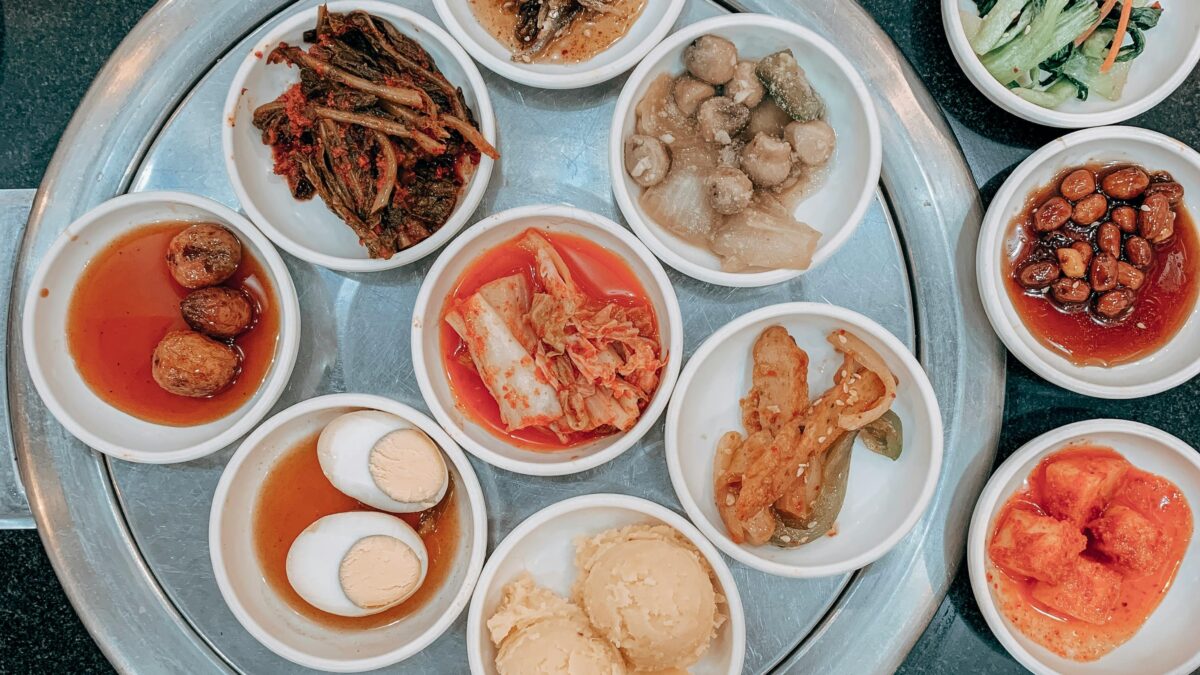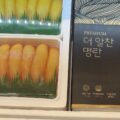Korean Table Basics

For centuries, Koreans have eaten products from the sea, the fields, and the mountains. The unique geography and climate of the Korean peninsula have made Korean cuisine rich and diverse. Korean foods are very distinctive, exotic, and authentic. One of the most distinctive features of Korean food culture is its spiciness. Basic seasonings such as red pepper, soy sauce, green onion, bean paste, garlic, vinegar, ginger, mustard, sesame, and rice wine are combined in various ways to enhance Korean dishes.
Korean cuisine features many side dishes. Popular side dishes include bean paste soup, fish, grilled beef, steamed vegetables, and cabbage kimchi. A full-course Korean meal is called “Hanjeongsik.” It consists of steamed short ribs, grilled fish, various meat and vegetable dishes, soup, rice, and kimchi.
Kimchi is the best-known Korean food. It is a vegetable dish deeply fermented with garlic, chili pepper, and other ingredients. It is served with almost every Korean meal and stimulates the appetite like pickles. Large quantities of kimchi are made in late fall or early winter for the winter months, a process called “kimjang.” Kimchi contains many healthy nutrients, including vitamin C and fiber.
Koreans also enjoy meat dishes, which are popular with Westerners as well. “Bulgogi” is commonly called Korean barbecue. It is marinated in a sauce made from sugar, soy sauce, sesame oil, garlic, and other seasonings, then cooked over an open flame at the table. Another popular dish is “Galbi,” made from beef or pork short ribs, prepared similarly to bulgogi.
Soups, called “guk” and “jjigae” in Korean, vary widely in taste and consistency. Historically, soup culture developed due to food shortages and cold weather. When ancestors lacked food, they made soup using small amounts of vegetables and beef bones. Hot soup also helped protect against the cold. “Maeuntang” is a spicy hot seafood soup containing white fish, tofu, vegetables, and red pepper powder. “Doenjang-guk” is a fermented soybean paste soup with baby clams in the broth. There are many varieties of soups, such as “miyeok-guk” and “kimchi-jjigae.”
Vegetable dishes are also very popular in Korea. Traditionally, Koreans eat more vegetables with rice than meat in their main meals, and vegetable dishes come in various types and flavors. Dishes made only with vegetables are called “namul.” There are two types: “saengche,” which are cold and raw namul, and “sukche,” which are warm and steamed namul.
Korean table settings are classified according to the number of side dishes served, excluding soup, rice, and kimchi: 3-cheop, 5-cheop, 7-cheop, 9-cheop, and 12-cheop. An average family typically has three or four dishes. For festivals or gatherings, a dozen or more dishes may be served. Korean food is shared communally at the table, except for rice and soup. All dishes except hot soup are served at once on a low table where diners sit on the floor. Chopsticks and spoons are used for eating. Unlike Japanese or Chinese chopsticks, Koreans use thinner metal chopsticks instead of wood.
Generally, the Korean diet uses many grains and vegetables, providing fiber and protein from both plant sources (tofu, bean paste, bean sprouts, soy sauce) and meat. Korean food is low in calories and fat but rich in flavor, making it very healthy and well balanced. Although the Korean diet is evolving rapidly and Western fast food is becoming more popular for convenience and taste, the traditional diet remains strong.



